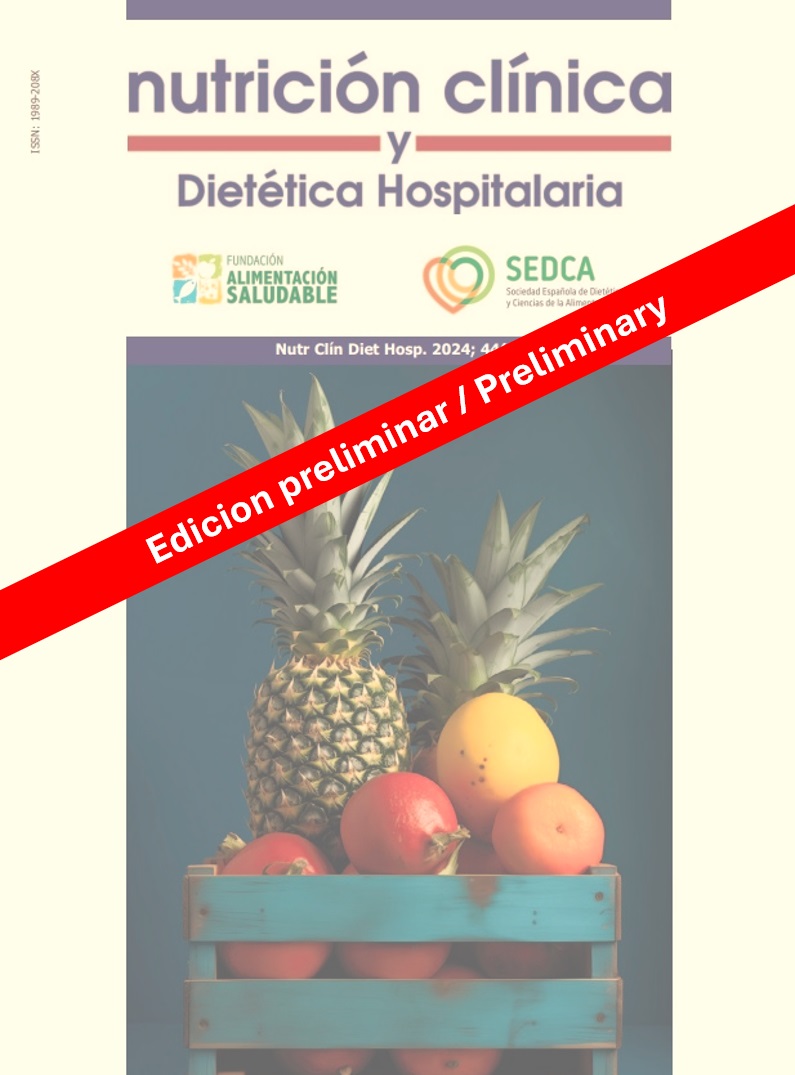Metabolic status as a predictor of cardiovascular disease in a working cohort: beyond body mass index.
DOI:
https://doi.org/10.12873/451bustamanteKeywords:
Enfermedades cardiovasculares, Síndrome metabólico, índice de masa corporal, obesidad metabólicamente benigna, salud laboral, factores de riesgoAbstract
Introduction: Cardiovascular diseases (CVD) are a leading cause of global morbidity and mortality. Recent research suggests that metabolic status could better predict cardiovascular risk than body mass index (BMI) alone.
Objective: To evaluate different metabolic phenotypes and the risk of developing CVD in a cohort of workers.
Methodology: A retrospective analytical observational cohort study with 4,158 workers followed for up to 8 years. The outcome variable was the presence of CVD, defined as the self-reported diagnosis of stroke or myocardial infarction. The combination of metabolic status and BMI resulted in six phenotypes: metabolically healthy normal weight (MHNW), metabolically unhealthy normal weight (MUNW), metabolically healthy overweight (MHOW), metabolically unhealthy overweight (MUOW), metabolically healthy obese (MHO), and metabolically unhealthy obese (MUO). CVD incidence was calculated, and Cox regression models were used to estimate adjusted hazard ratios (HR).
Results: The overall incidence of CVD was 5.64 per 1,000 person-years. Compared to the MHNW phenotype, metabolically unhealthy phenotypes showed a significantly higher risk of CVD: MUNW (aHR: 5.19, 95% CI: 1.29-20.84), MUOW (aHR: 7.07, 95% CI: 2.40-20.86), and MUO (aHR: 7.35, 95% CI: 2.43-22.21).
Conclusion: The findings underscore the importance of metabolic status, independent of BMI, in predicting cardiovascular risk. This has significant implications for clinical practice and public health, suggesting the need to implement comprehensive metabolic assessments and personalized prevention strategies across all BMI categories, especially in the workplace.
References
Roth GA, Mensah GA, Johnson CO, Addolorato G, Ammirati E, Baddour LM, et al. Global Burden of Cardiovascular Diseases and Risk Factors, 1990-2019: Update From the GBD 2019 Study. J Am Coll Cardiol. 2020;76(25):2982–3021. doi:10.1016/j.jacc.2020.11.010
Visseren FLJ, Mach F, Smulders YM, Carballo D, Koskinas KC, Bäck M, et al. 2021 ESC Guidelines on cardiovascular disease prevention in clinical practice. Eur Heart J. 2021;42(34):3227–337. doi:10.1093/eurheartj/ehab484
Stefan N, Schick F, Häring H-U. Causes, Characteristics, and Consequences of Metabolically Unhealthy Normal Weight in Humans. Cell Metab. 2017;26(2):292–300. doi:10.1016/j.cmet.2017.07.008
Lavie CJ, Laddu D, Arena R, Ortega FB, Alpert MA, Kushner RF. Healthy Weight and Obesity Prevention: JACC Health Promotion Series. J Am Coll Cardiol. 2018;72(13):1506–31. doi:10.1016/j.jacc.2018.08.1037
Blüher M. Metabolically Healthy Obesity. Endocr Rev. 2020;41(3):bnaa004. doi:10.1210/endrev/bnaa004
Antonopoulos AS, Tousoulis D. The molecular mechanisms of obesity paradox. Cardiovasc Res. 2017;113(9):1074–86. doi:10.1093/cvr/cvx106
Eckel N, Li Y, Kuxhaus O, Stefan N, Hu FB, Schulze MB. Transition from metabolic healthy to unhealthy phenotypes and association with cardiovascular disease risk across BMI categories in 90 257 women (the Nurses’ Health Study): 30 year follow-up from a prospective cohort study. Lancet Diabetes Endocrinol. 2018;6(9):714–24. doi:10.1016/S2213-8587(18)30137-2
Goetzel RZ, Pei X, Tabrizi MJ, Henke RM, Kowlessar N, Nelson CF, et al. Ten modifiable health risk factors are linked to more than one-fifth of employer-employee health care spending. Health Aff Proj Hope. 2012;31(11):2474–84. doi:10.1377/hlthaff.2011.0819
Arena R, Guazzi M, Lianov L, Whitsel L, Berra K, Lavie CJ, et al. Healthy Lifestyle Interventions to Combat Noncommunicable Disease—A Novel Nonhierarchical Connectivity Model for Key Stakeholders: A Policy Statement From the American Heart Association, European Society of Cardiology, European Association for Cardiovascular Prevention and Rehabilitation, and American College of Preventive Medicine. Mayo Clin Proc. 2015;90(8):1082–103. doi:10.1016/j.mayocp.2015.05.001
von Elm E, Altman DG, Egger M, Pocock SJ, Gøtzsche PC, Vandenbroucke JP. Strengthening the reporting of observational studies in epidemiology (STROBE) statement: guidelines for reporting observational studies. BMJ. 2007;335(7624):806–8. doi:10.1136/bmj.39335.541782.AD
Gómez-Zorita S, Queralt M, Vicente MA, González M, Portillo MP. Metabolically healthy obesity and metabolically obese normal weight: a review. J Physiol Biochem. 2021;77(1):175–89. doi:10.1007/s13105-020-00781-x
Pluta W, Dudzińska W, Lubkowska A. Metabolic Obesity in People with Normal Body Weight (MONW)—Review of Diagnostic Criteria. Int J Environ Res Public Health. 2022;19(2):624. doi:10.3390/ijerph19020624
Vera Ponce VJ. Database Ocupacional [Internet]. figshare; 2024 [citado el 24 de septiembre de 2024]. p. 8073963 Bytes. doi:10.6084/M9.FIGSHARE.27098296
Caleyachetty R, Thomas GN, Toulis KA, Mohammed N, Gokhale KM, Balachandran K, et al. Metabolically Healthy Obese and Incident Cardiovascular Disease Events Among 3.5 Million Men and Women. J Am Coll Cardiol. 2017;70(12):1429–37. doi:10.1016/j.jacc.2017.07.763
Eckel N, Meidtner K, Kalle-Uhlmann T, Stefan N, Schulze MB. Metabolically healthy obesity and cardiovascular events: A systematic review and meta-analysis. Eur J Prev Cardiol. 2016;23(9):956–66. doi:10.1177/2047487315623884
Mongraw-Chaffin M, Foster MC, Kalyani RR, Vaidya D, Burke GL, Woodward M, et al. Obesity Severity and Duration Are Associated With Incident Metabolic Syndrome: Evidence Against Metabolically Healthy Obesity From the Multi-Ethnic Study of Atherosclerosis. J Clin Endocrinol Metab. 2016;101(11):4117–24. doi:10.1210/jc.2016-2460
Mechanick JI, Farkouh ME, Newman JD, Garvey WT. Cardiometabolic-Based Chronic Disease, Addressing Knowledge and Clinical Practice Gaps: JACC State-of-the-Art Review. J Am Coll Cardiol. 2020;75(5):539–55. doi:10.1016/j.jacc.2019.11.046
Neeland IJ, Ross R, Després J-P, Matsuzawa Y, Yamashita S, Shai I, et al. Visceral and ectopic fat, atherosclerosis, and cardiometabolic disease: a position statement. Lancet Diabetes Endocrinol. 2019;7(9):715–25. doi:10.1016/S2213-8587(19)30084-1
Bhaskaran K, Dos-Santos-Silva I, Leon DA, Douglas IJ, Smeeth L. Association of BMI with overall and cause-specific mortality: a population-based cohort study of 3·6 million adults in the UK. Lancet Diabetes Endocrinol. 2018;6(12):944–53. doi:10.1016/S2213-8587(18)30288-2
Stefan N, Häring H-U, Hu FB, Schulze MB. Metabolically healthy obesity: epidemiology, mechanisms, and clinical implications. Lancet Diabetes Endocrinol. 2013;1(2):152–62. doi:10.1016/S2213-8587(13)70062-7
Sorensen G, McLellan D, Dennerlein JT, Pronk NP, Allen JD, Boden LI, et al. Integration of health protection and health promotion: rationale, indicators, and metrics. J Occup Environ Med. 2013;55(12 Suppl): S12-18. doi:10.1097/JOM.0000000000000032
Pérez Coaguila J. Tendencias del empleo formal privado de Perú: un análisis con planilla electrónica (2008-2018). Rev Latinoam Desarro Económico. 2019;(32):33–55.
Downloads
Published
How to Cite
Issue
Section
Categories
License
Copyright (c) 2025 Nutrición Clínica y Dietética Hospitalaria

This work is licensed under a Creative Commons Attribution-NonCommercial-NoDerivatives 4.0 International License.
Los lectores pueden utilizar los textos publicados de acuerdo con la definición BOAI (Budapest Open Access Initiative)



